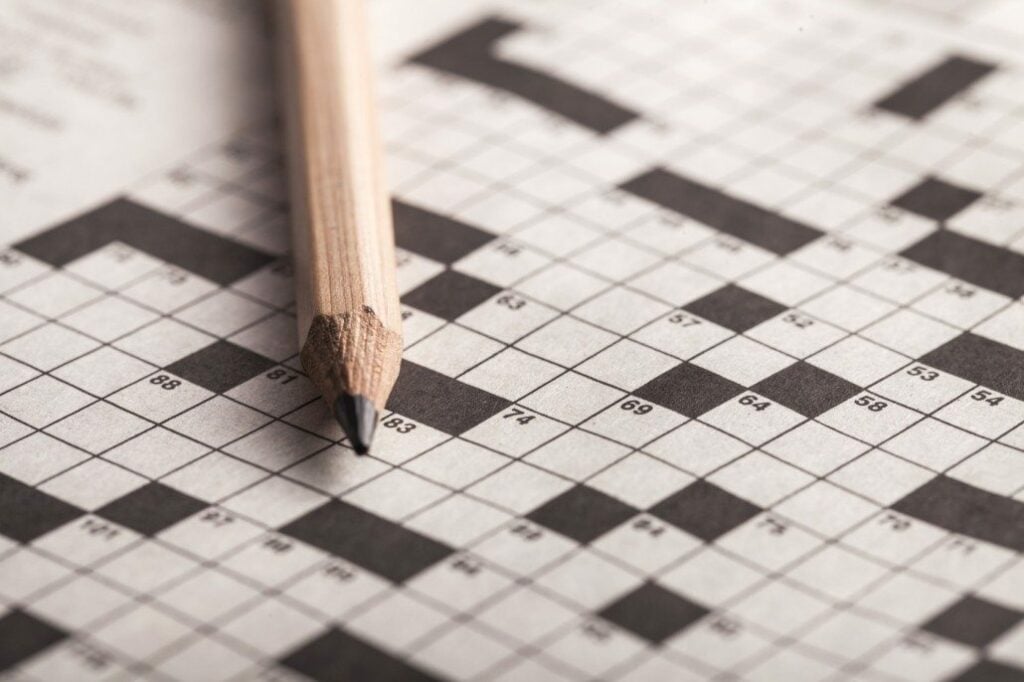Crossword puzzles are usually found in printed newspapers and can be a great way to pass the time if you’re looking for a different activity instead of swiping left, right, up, and down on social media. Crossword puzzles were so popular back in the day that it was thought of as an escape from the horrors of the world war?
The crossword puzzle gained popularity when it came out in the early 1900s. Many people felt that the puzzles were a waste of time and brainpower, describing it as an “epidemic” and a “national menace.”
History of the Crossword Puzzle
Arthur Wynne was born in 1871 in Liverpool, England. By the age of 19, he migrated to the US to pursue his career in the newspapers. He first joined the Pittsburgh Press and then moved to the New York World. Wynne was responsible for creating the content of the Fun section of the newspaper. (Source: CS Monitor)
Wynne thought of the Word-Cross, and historians figured it might have been inspired by word-form puzzles popular in late nineteenth-century England. Wynne may have also been inspired by the ancient five-word Latin palindrome called the Sator square.
In the 1913 Christmas edition of Fun, Wynne published his first Word-Cross. The puzzle was diamond-shaped and numbered, and its center was empty. This first puzzle was a bit difficult for ordinary people. Some of the words were uncommon, as the name of the aromatic plant that grows in the Himalayas.
The name of the puzzle was later changed from Word-Cross to Cross-Word. Allegedly, the change of the name was due to an error of the typesetter of the newspaper. But Wynne didn’t mind it. The name stuck to this day. (Source: Smithsonian Magazine)
The Popularity of Crossword Puzzles
Many Americans began regularly playing the puzzle, generating a craze at the time. In 1924, Richard Simon and M. Lincoln Schuster opened a publishing house in New York. Their publishing company printed a book with a collection of crossword puzzles upon the request of Simon’s aunt, who was a crossword fanatic. They even included a pencil when they first sold the book.
At the time, the publishers worried that the book wouldn’t sell since it was an unliterary book. It was just a compilation of crossword puzzles. They only had about 3,600 copies published and didn’t print their names on them.
Contrary to their thoughts, the book sold out almost immediately. Simon and Schuster had to run additional prints. The book sold around 100,000 copies, being bought by different groups formed due to their shared interest in solving crossword puzzles like the Amateur Cross Word Puzzle League of America.
The league began standardizing the crossword puzzle, applying rules and regulations in its creation. Some of the regulations implemented were that the puzzle had to be all over interlock, meaning that no part of the grid could be completely cut-off from the entirety of the black square. Another rule was that only one-sixth of the grid could be covered with black squares and that no two-letter word should be included in the puzzles. (Source: Smithsonian Magazine)
How does the Crossword Puzzle Affect Our Minds?
Crossword puzzles are a pastime for many people, often being played during idle moments. But researchers discovered that it could be beneficial to the player. Regularly playing crossword puzzles at least once a week can improve memory and brain function in older adults. This was discovered by researcher Ann Lukits, publishing her findings in the Wall Street Journal. Her article was titled Puzzles Boost Verbal Skills, Cut Dementia Risk.
Lukits also discovered that solving crossword puzzles may improve mental functions in brain damage or early dementia patients. According to the Alzheimer’s Association, solving crosswords daily is an excellent way of keeping one’s mind active and sharp, especially as one grows older. (Source: Life Hack)
